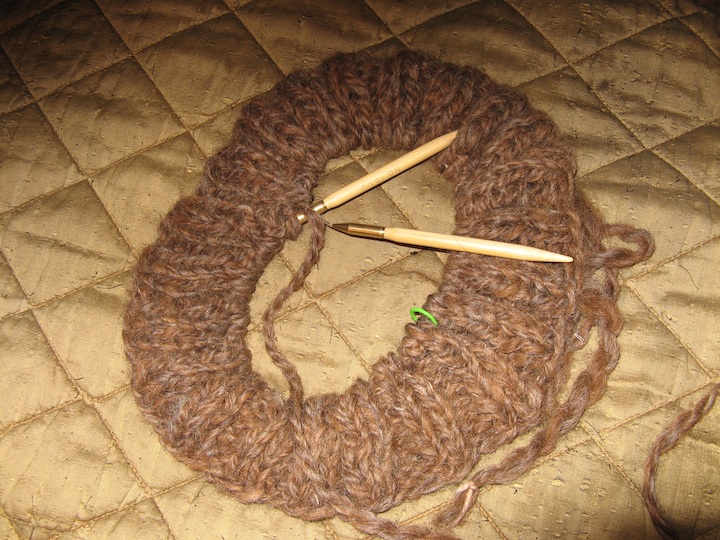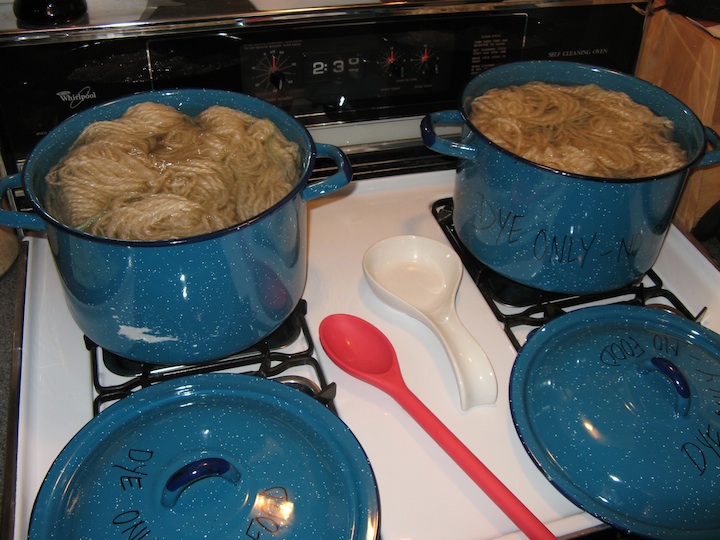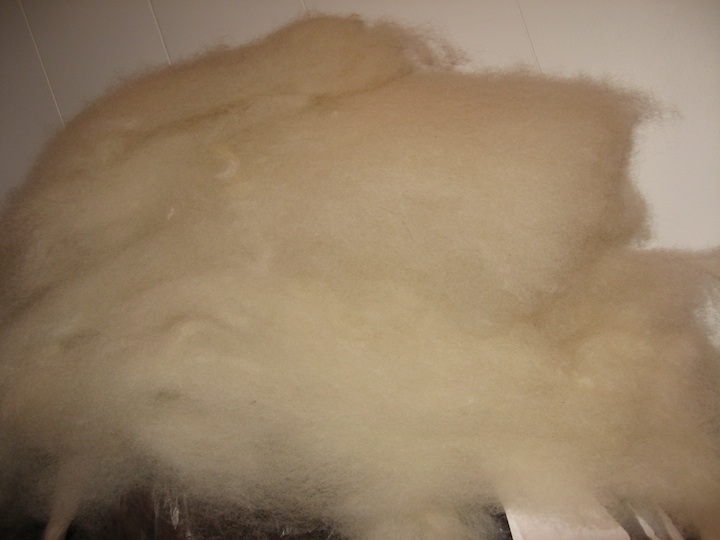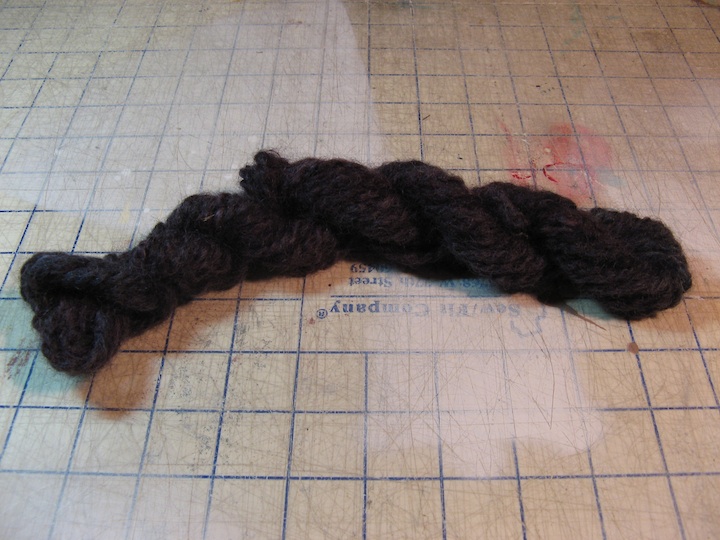Casting on, starting with the ribbed edge:

Mordanting a pound of BFL with alum and cream of tartar in preparation for dying:


Observations – sometimes things done very quickly from memory have as much dynamism and power as live drawing from the model…
This will be used for the dying experiments:

Handspun and handknit mittens for R by request:

Observations: Highly simplified pattern stands out better. Also, keeping the side stripe solid also looked better. I liked the double rolled cuff, and was surprised to see how easy it was.
Handspun and handknit for C:

Observations: my handspun is so fuzzy that pattern definition is lost, and making two patterns, one on each “face” of the mitten, was rather a waste of time. They are cozy-soft, though, and I love the base design. See Anna Zilboorg, Magnificent Mittens. In this case, the mischief was started when a certain knitting laurel loaned me the book. I promptly tucked hers away “someplace safe” and bought my own copy in which to make notes. I did eventually figure out where the “someplace safe” was 🙂

This little bit of silliness is an alligator in progress (Morehouse Designs, available for download on the web). Not for the first time, this bit of silliness is All Jennifer’s Fault 🙂

Observations: got a reasonably dark purple, and now I can say I’ve tried food coloring, but I will be graduating to real dyes next, so I can get reproducible and predictable results. Enamel pots and other tools arrived today. Just remains to spin up the rest of the BFL.

Observations: the crossbreed means the staple length is a little longer than usual merino, but retains the lovely qualities. Easier to spin, and actually spun up extremely fine – as close to lace weight as I have ever achieved.
Powered by WordPress